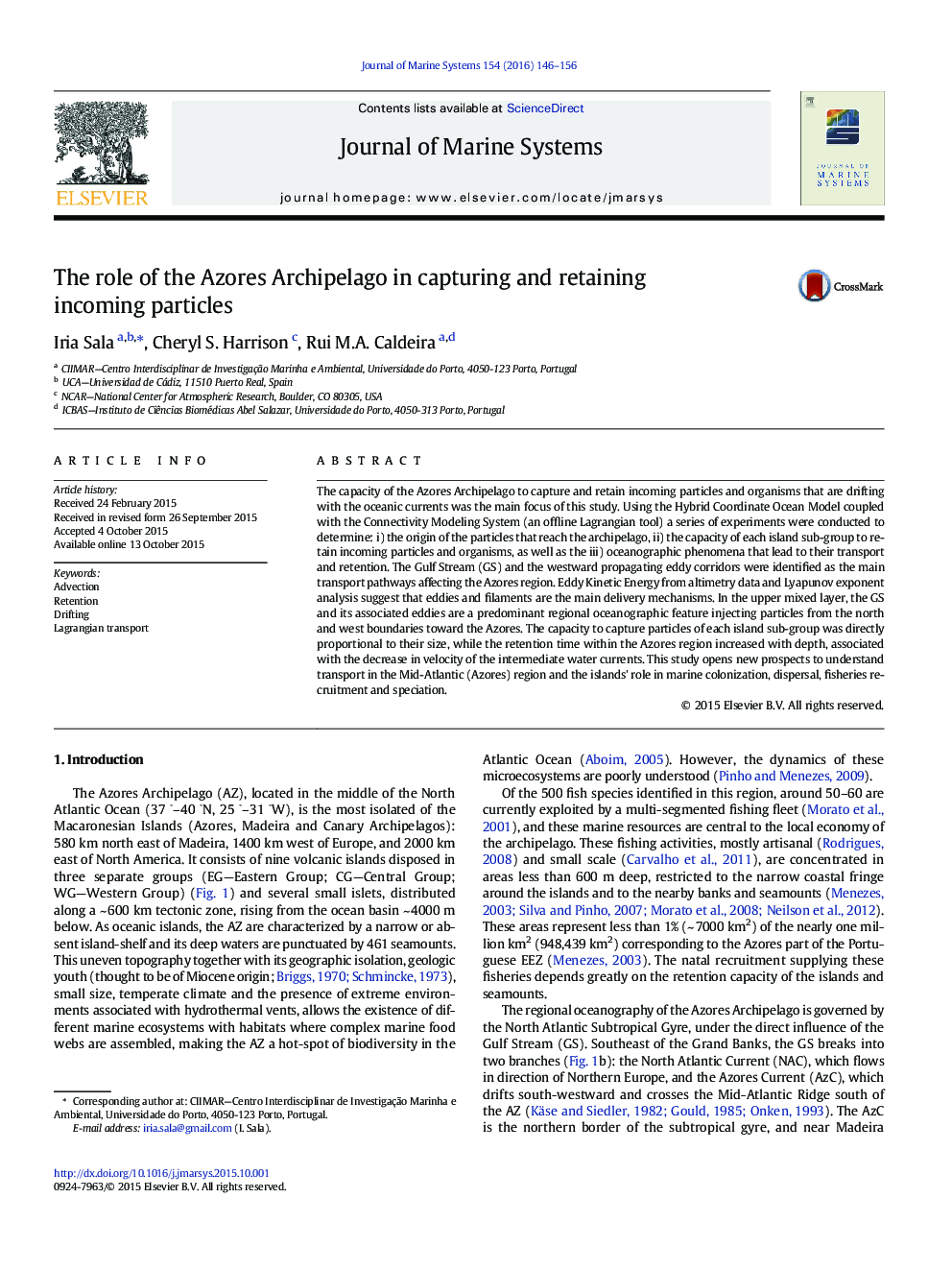| Article ID | Journal | Published Year | Pages | File Type |
|---|---|---|---|---|
| 6386654 | Journal of Marine Systems | 2016 | 11 Pages |
Abstract
The capacity of the Azores Archipelago to capture and retain incoming particles and organisms that are drifting with the oceanic currents was the main focus of this study. Using the Hybrid Coordinate Ocean Model coupled with the Connectivity Modeling System (an offline Lagrangian tool) a series of experiments were conducted to determine: i) the origin of the particles that reach the archipelago, ii) the capacity of each island sub-group to retain incoming particles and organisms, as well as the iii) oceanographic phenomena that lead to their transport and retention. The Gulf Stream (GS) and the westward propagating eddy corridors were identified as the main transport pathways affecting the Azores region. Eddy Kinetic Energy from altimetry data and Lyapunov exponent analysis suggest that eddies and filaments are the main delivery mechanisms. In the upper mixed layer, the GS and its associated eddies are a predominant regional oceanographic feature injecting particles from the north and west boundaries toward the Azores. The capacity to capture particles of each island sub-group was directly proportional to their size, while the retention time within the Azores region increased with depth, associated with the decrease in velocity of the intermediate water currents. This study opens new prospects to understand transport in the Mid-Atlantic (Azores) region and the islands' role in marine colonization, dispersal, fisheries recruitment and speciation.
Related Topics
Physical Sciences and Engineering
Earth and Planetary Sciences
Oceanography
Authors
Iria Sala, Cheryl S. Harrison, Rui M.A. Caldeira,
